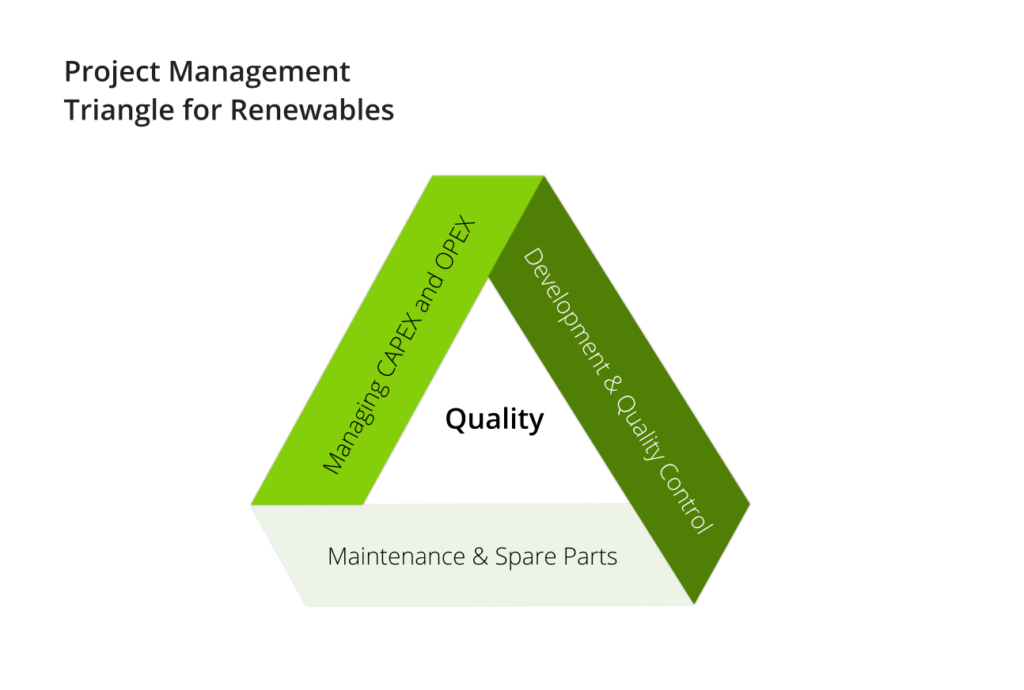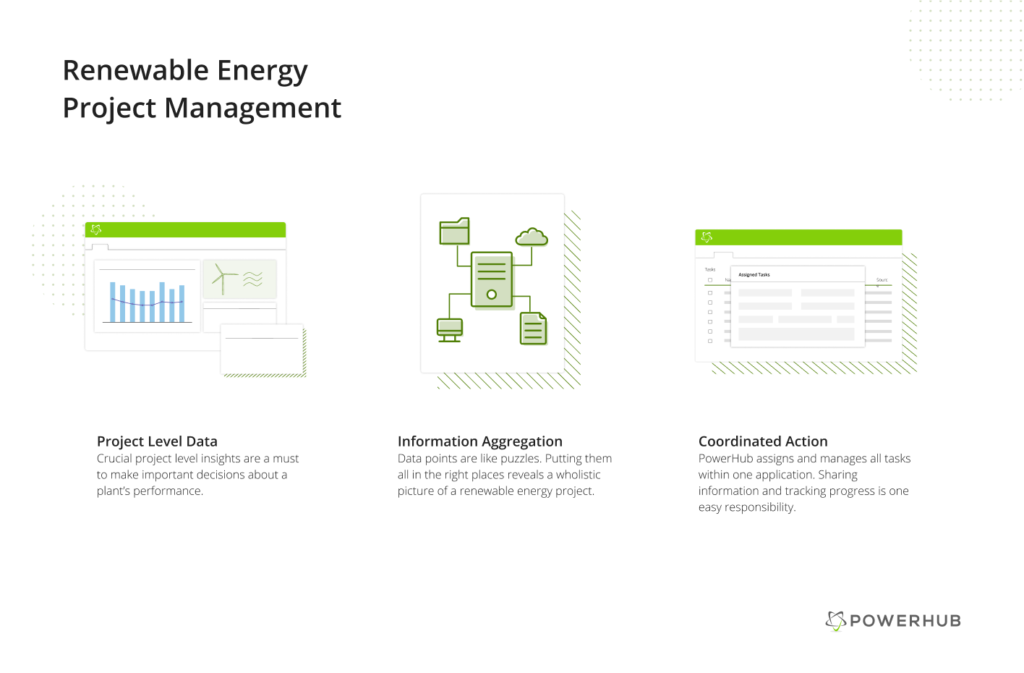“Those who plan do better than those who do not plan, even though they rarely stick to their plan.”
Mr. Churchill really summed it up for us. That’s exactly what comes to mind when we think about renewable energy project management. It leads to success. It’s undeniable. But it must accompany a flare for agility for those stormy, turbulent days that renewables are so notorious for.
As of 2020, there’s ample data to prove the growth and momentum of the renewables industry. And we’re here for it. The ambitious net-zero and majority renewables by 2030 targets are applaudable. However, we would also like to see a strong and definite shift towards a formal, well-thought-out project management strategy.
After all, those billion-dollar energy asset management undertakings are changing the world for good.
Tackling Renewable Energy Risks with Project Management
Our two cents? Simply referring to energy asset management plants as ‘projects’ is not enough. Applying project management principles and best practices to each of these initiatives is what really makes clean energy portfolios successful.
Now, you must have heard of the tried and true project management triangle. The purpose of this triangle is to identify risks and problems that need attention within the three most important areas of a business: cost, time, and scope.
While these problems are usually manageable for most real-world business, things tend to get complicated with renewables. Predominantly because there’s way too many variables and out-of-control, knock-me-off-my-feet factors (umm, nature for one) that can impact a project’s success and profitability.
Therefore, when put into perspective for energy asset management, the renewable project management triangle will help you minimize and manage risks associated with:

Scheduling for Maintenance, Spare Parts, and Other Variables
Scheduling maintenance and spare part ordering isn’t a simple math for renewable energy. Large scale wind and solar plants rely on technologically advanced machinery and software that constantly evolves. Therefore, an asset or project manager must factor in the time needed by the industry to conduct research, development, and testing.
Moreover, natural disasters, and changing global political climate also have a profound impact on schedules for construction, acquiring permits, signing licenses, and carrying out contractual obligations. Therefore, breaking down the initiative into phases and timed project deliverables helps set incremental objectives.
Using renewable energy project management from the get-go means putting together a plan in place if scheduled activities are disrupted.
Managing CAPEX and OPEX Costs
Energy asset management is capital intensive. Billions of dollars are spent to lay the foundation of a solar or wind plant. Managers and asset owners are usually prepared for that.
What they do want to keep a close eye on is ancillary costs. For instance, once the location for a wind farm is shortlisted, a lot of resources can be tied up in logistical services. These include getting permits, road construction, and transportation of equipment.
A smart project manager will forecast, and account for these costs. And with the help of intelligent renewable asset management software, he’ll be able to allocate a fair budget to see these responsibilities through.
Managing Scope of Development and Quality Controls
Deciding on the scope of a project takes expertise. Cross-functional teams are called to weigh in on decisions to ensure a wind or solar plant meets expectations. Therefore, defining the scope of a renewable plant is one of the most important steps in the planning phase.
Quality control involves similar expectations. Whether it’s for spare parts, or the maintenance personnel, setting project management KPIs is the best way to ensure plant performance and output are on track.
Meet the Renewable Energy Project Manager in PowerHub
Project management is at the heart of the PowerHub platform. In analyzing data, centralizing it, and inducing transparency in processes, it aims to make energy asset management robust, yet easy.

In particular, our project manager gives you:
Project level data
Imagine seeing a ton of performance data and trends, but not being able to make sense of it? Now imagine this data divided by projects and portfolios. That’s what we call insights.
Consequently, having access to project level data is crucial in making important maintenance, re-powering or cost-cutting decisions.
Information aggregation
Comparison of data, and putting context to it is another project management skill that a platform must exhibit.
With PowerHub, asset and project managers can pull up relevant information about a single project. These insights can then be linked and aggregated with portfolio data. It gives them a comprehensive picture of performance, output, and pending tasks that need to be addressed.
Therefore, for a project to fare well, putting together these data puzzles is imperative. And doing so manually should not be required.
Well, not when your project manager is an intelligent energy asset management platform.
Coordinated action
Need to assign tasks to your team members? Managing your renewable energy projects with PowerHub means you can coordinate all actions related to the project within one application.
Create tasks, assign them, share information related to each, and track progress for a simplified approach to everyday management of your wind or solar projects.
Where to Now, Mr. Churchill?
Needless to say, project management is incomplete in the absence of a powerful, well-integrated energy asset management platform. One that’s far from the manual copy-pasting of an excel sheet.
If you truly want the best practices of project management to make your portfolio successful, embracing digitalization will have to become your first priority.
There’s just no two ways about it. We have a funny feeling Winston Churchill would agree.




